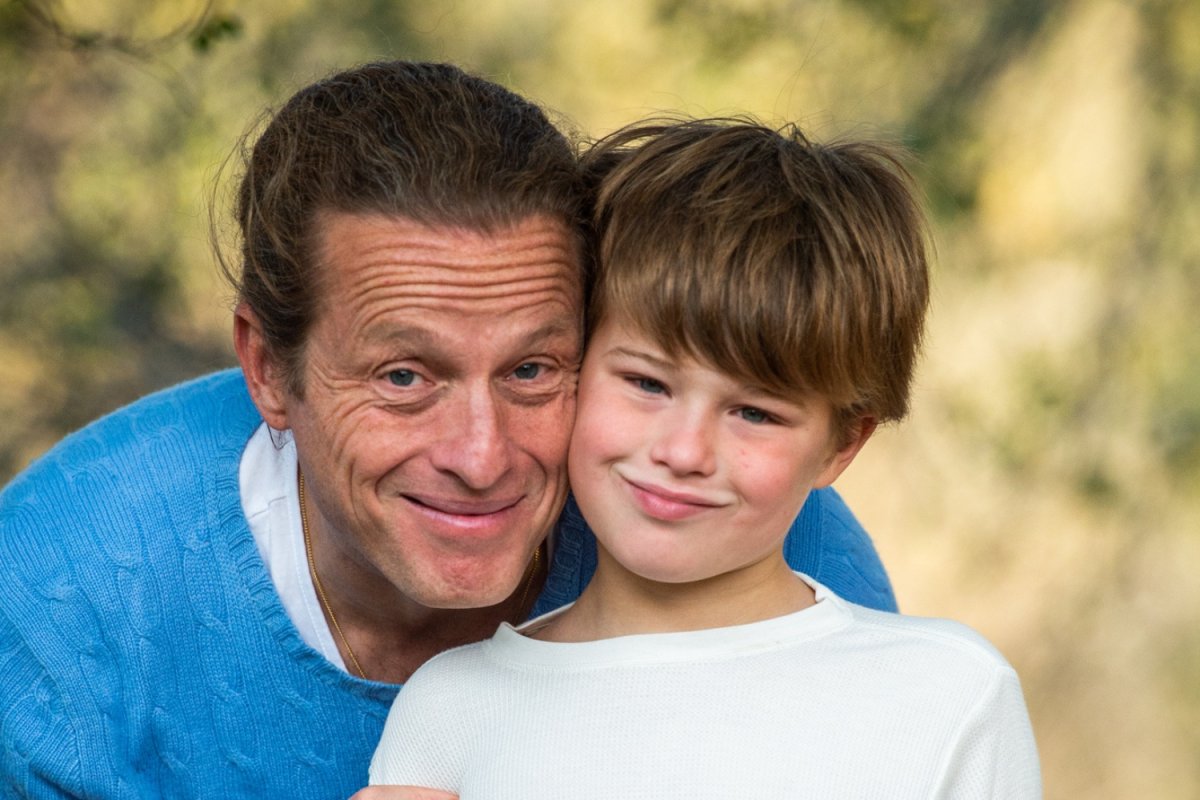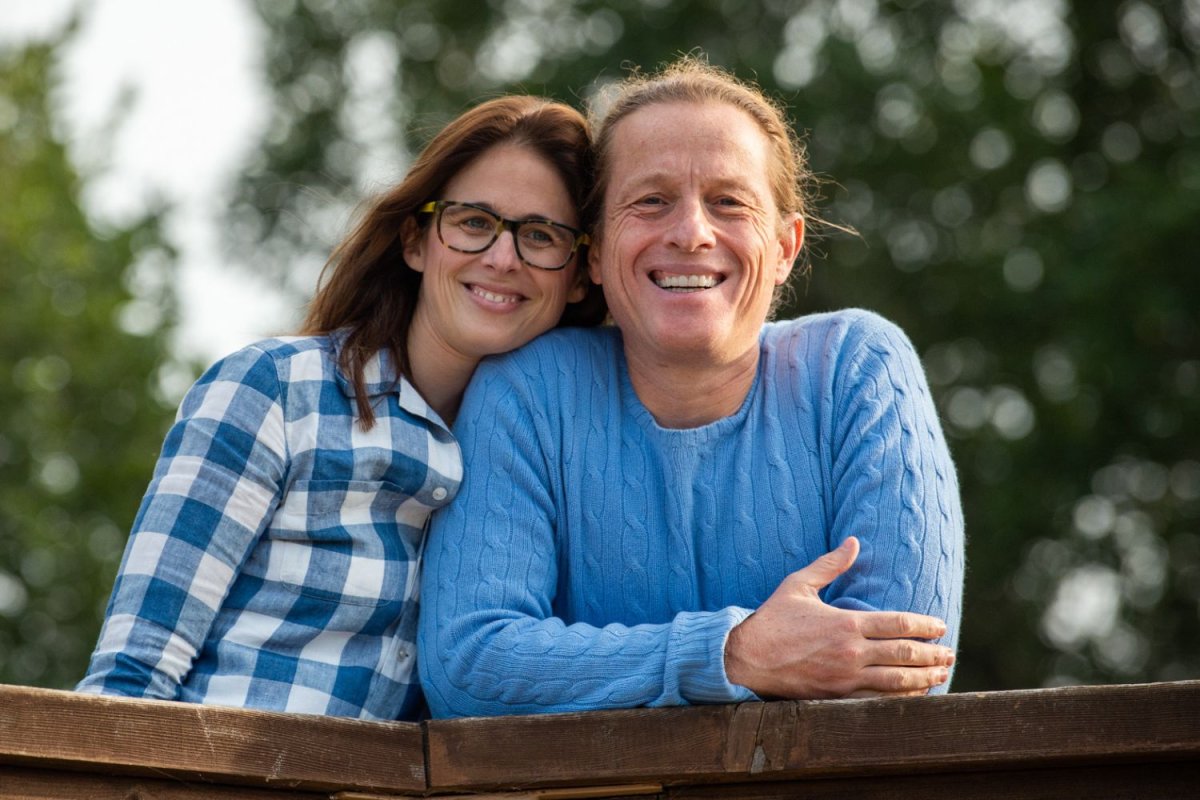In early January 2014, my wife and I drove to the hospital in Washington, DC. Everything was going according to plan; the doula met us there and everything we had learned in our birthing classes was fresh in our minds. The birth was 18-hours long; our son Tony just could not break out of the sac.
The length of my wife's labor and delivery didn't set off any red flags at the time. And, upon birth, Tony passed all exams with flying colors.
But Tony began missing milestones early—he never rolled over, was late to sit and crawl and would often look at us with bemusement when we tried to convince him to clap, wave or paint. By age 2, it was clear that something was amiss; he could only say 10 words.

We began with speech therapy, which led to physical therapy and occupational therapy. Everyone thought Tony just needed more help and time.
Then one day when he was 3, he had his first visible seizure; he fell back and seized for an entire minute, which felt like an hour. After, he was confused, and we were terrified.
We went to the Stanford ER and were referred to neurology. We had recently moved to the Bay area from Washington, DC. Over the course of the next year, one test led to another as we cycled through seizure drugs that changed our little boy right before our eyes. On one, it seemed like Tony was miles away, all the time.
We dealt with more therapies and applied to special preschools. We were in full panic mode—our little boy was sick and nobody knew why, nor could they agree on how to help him. One night in Stanford Children's Hospital, I was sitting on the bed holding Tony's hand while two neurologists debated which drug to try next.
It was then that I started to grasp the difficult path that lay ahead.
One call changed everything
The calls that change your life don't come with a special ringtone. It was a rainy Friday night in mid-February, 2018, when the geneticist excitedly called at 6 pm with results from the RNA testing, confirming that Tony had SYNGAP1.
Tony had just turned 4. At the time, people weren't keeping track of how many other people with this disease were out there; from what we can tell, from a census we started in mid-2019, he was around the 100th known case.

I spent all weekend Googling...and crying. Sitting on the couch with my laptop, the sense of dread kept growing as I read about SYNGAP1. Lifelong. No treatments. Severe sleep disruption. Chronic constipation. Autism. Treatment-resistant seizures. Feeding tubes. Intellectual disability. Aggression.
At 4 years old, Tony was delayed, struggled to sleep, had seizures and some behavior issues, but this told me it was all going to get worse in the next few years. Much worse.
Eventually, the genetic counselor explained that we all have two copies of every gene, one from mom and one from dad. Tony has a spontaneous "de novo" mutation or "typo" in one copy; as a result, that copy didn't work, leaving Tony with 50 percent of the normal amount of the SYNGAP protein. She told us there was neither treatment nor cure.
Raising a child with SYNGAP1
At first, things seemed bearable. Tony was slow and adorable; people gave him so much grace. But he is 9 now and, as he gets bigger, people are less tolerant of tantrums, diapers and misbehavior. Kindness is in short supply—going anywhere with Tony feels risky. What if he runs away and I can't grab him? He doesn't quite understand danger, so could he run into traffic? What if people see me restraining a young boy having a tantrum and call CPS?
The difference with his peers is hard to miss and painful to experience. When I see other little boys holding down conversations, riding bikes, feeding themselves, enjoying normal foods—all things Tony can't do—my heart breaks. The concerns for his loneliness, and fear for his future, can overtake me.
When I see John, our neurotypical 4-year-old, do things that Tony can't, it takes my breath away. Suddenly I understand what his life should have looked like, and I re-grieve experiences from years past.
I want Tony to be able to get through a day without a seizure, to be able to fall asleep, experience REM sleep, and wake up 8 hours later—all without meds. I want him to be able to run in a field without getting exhausted. Or to hold a thought long enough to have a conversation.
I want Tony to have enough words in his vocabulary to tell us why he's crying or frustrated, or to have the dexterity to put Legos together or tie his shoelaces. I want him to know when it's time to go to the bathroom—to not need diapers, and to be able to live without 24-hour care.
Why I won't stop fighting for a cure
In the years since Tony's diagnosis, my wife, Ashley, and I created the SynGAP Research Fund (SRF) to raise funds and accelerate development of therapies. At first, we thought we needed to fundraise millions. We have raised $3.7 million so far, and we will continue to fundraise—but it's so much more than that.

We also needed to organize the patient community, collect patient data and engage industry and researchers to make SYNGAP1 a priority. It is full-time work, for which I left my dream job working in policy and social change three years ago. The SRF community is a gift, the friendship and connection with other families sustains me.
Because SYNGAP1 is a gene-based disease, our community is optimistic that we are only a few years from a therapy to increase SYNGAP in our kids' brains. I am encouraged by the relatively new gene therapy for Spinal Muscular Atrophy (SMA) and I have tremendous hope that scientists will bring therapies to market for our loved ones.
My hope for Tony and the other 1,164 diagnosed patients around the world—that we know about—is that we can help their brains make more SYNGAP protein from the good copy of the gene they do have. A few companies are working on this.
My life is dedicated to this cause; as a parent, it's the number one thing I strive to do for my sons: alleviate Tony's suffering to help him live the best possible life, and leave John with the smallest possible burden when we are gone.
Mike Graglia is the co-founder of the SynGAP Research Fund (SRF).
All views expressed in this article are the author's own.
Uncommon Knowledge
Newsweek is committed to challenging conventional wisdom and finding connections in the search for common ground.
Newsweek is committed to challenging conventional wisdom and finding connections in the search for common ground.
About the writer
To read how Newsweek uses AI as a newsroom tool, Click here.








